Corporal Henry (Hank) Bernard Van Hyfte
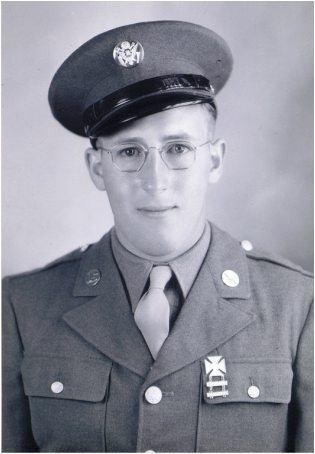
- Unit: 8th Infantry Division, 121st Infantry Regiment, 2nd Battalion, Company E
- Service Number: 37259813
- Date of Birth: December 12, 1920
- Entered the Military: November 30, 1941
- Date of Death: July 27, 1944
- Hometown: Tounton, Minnesota
- Place of Death: near Saint-Patrice-de-Claids, France
- Award(s): Purple Heart
- Cemetery: Plot D, Row 5, Grave 3. Normandy American Cemetery, Colleville-sur-Mer, France
Mentored by Mr. David Howard
North Lakes Academy
2014-2015
Early Life
Henry, known as Hank, was born to Reniel and Elizabeth Van Hyfte on December 12, 1920. He had blue eyes and brown hair. He became an older brother in 1923 when his brother Francis was born and again in 1925 when his brother Leonard was born. He was known for being amiable, cheerful, light-hearted, and a “jolly good fellow.” He was also known for being a prankster as he would sometimes play innocent little tricks on others.
During his childhood, he spent much of his time on the family farm farming with his brothers. Once when Van Hyfte and his brothers were kids, their mother got mad at them, so she bought all of the boys a doll. They, however, decided to retaliate, and they began beating the dolls against the clothesline. In 1928, Hank began attending school when he was seven. Hank went to school in a one-room schoolhouse in the District 91 Rural School. Hank participated in school events and activities such as their Christmas performance and their Patriotic performance. At lunchtime during the school day, he played baseball in the summer and went sledding in the winter.
During the wintertime, he got to school on a sleigh pulled by horses. The Janssen family had the sleigh and would pick up kids along the way, including Van Hyfte and his brothers. Sometimes when they went down one hill fast, and they hit the next hill going up the wrong way, then their sled would fall over, and they would all fall out.
After riding on the sled to school (which was about two miles away from the Van Hyfte farm), they would know if they had school that day if there was smoke coming out of the chimney. If there was no smoke coming out of the chimney, that meant the teacher was not at school, and the kids went home and had a free day. During the warmer times of the year, the class would visit the creek in the meadow. One day after the class returned from a field trip to the stream, Hank said to Helen Janssen, “Oh Helen, I have a little box for you.” She asked, “What is in the box?” He said, “Open it and find out.” She opened the box and found there was a crab inside, causing her to let out a little scream. She was not too upset by it and eventually laughed it off.
For reasons unknown, Van Hyfte attended only 39 classes in his first year of school. Because of this, he failed all of his classes. However, the following year he went to 120 days of school, and all years after, he went to about 150 days of school. He was very active in the school activities and programs. He attended school until the seventh grade before he returned to work on the farm.
During his school years, Van Hyfte also participated in many local activities. The Janssens would hold dances at their farmhouse as they were a very musical family, and much of the community would show up. In the summertime, he would go over to the meadow on Sunday afternoons when the local kids played baseball games and played with them. Also, during the summer, many would go and play by the creek.
During his young adult years, Hank spent most of his time working on the farm. He enjoyed farming as well as hunting and fishing. During these years, he was seen as a man who was a stoic, quiet, and competent guy.
Wheat was one of the crops that they grew on their farm. Wheat needed to be thrashed before it could be sent to the grain elevator. Hank was known for being very deliberate and knowing what he had to do to get it done when it came to the thrashing business.
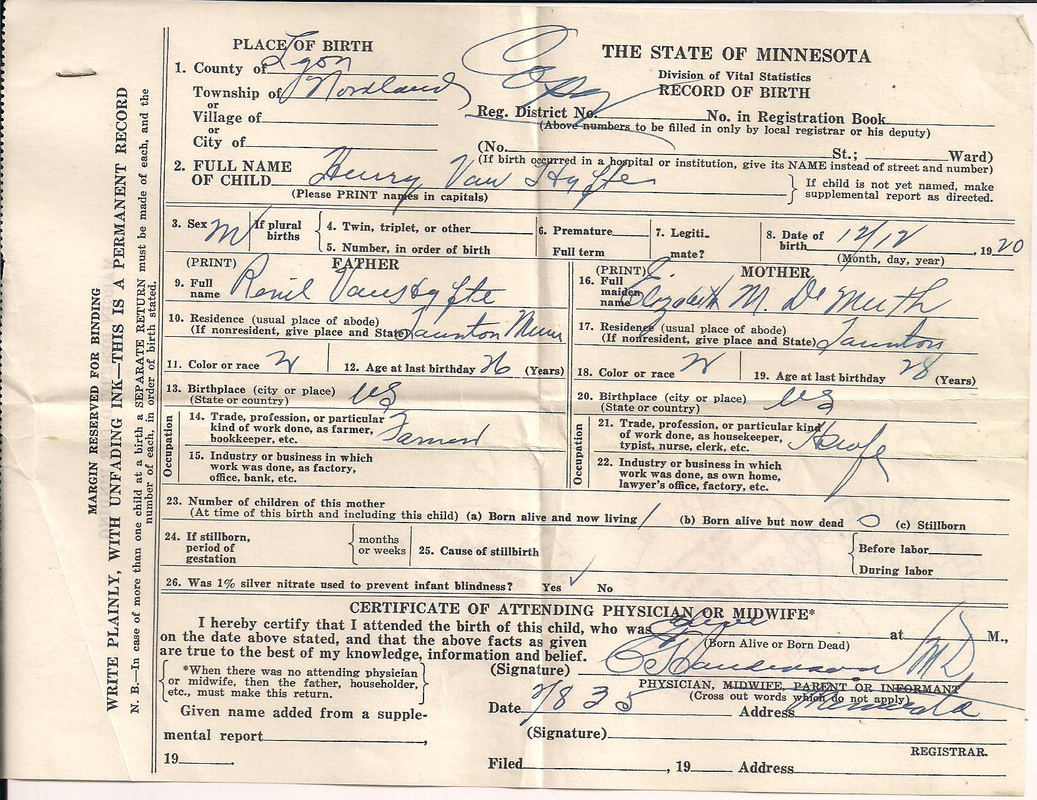
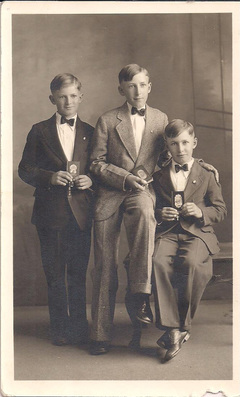

Homefront
Fort Snelling
Throughout the war, Fort Snelling was the place of induction for more than 300,000 men and women entering the armed forces. They would stay at the barracks, usually for only a few nights while the induction process took place. While at the fort, inductees would be tested and receive a classification. Then, they would receive medical treatment, vaccinations, uniforms, and weapons. Most of the inductees would then be sent off somewhere else for basic training, although some stayed back for training.
Twin Cities Army Ammunition Plant (TCAAP)
The Twin Cities Army Ammunition Plant, a 2,400-acre ammunition plant, was built in late 1941. During the war, the plant made 0.30, 0.45, and 0.50 caliber ammunition on its 35 lines. The plant became known as one of the most productive in the nation. Because of this, at 11 p.m. on September 19, 1942, President Franklin D. Roosevelt visited the workers. In July 1943, the plant reached its peak for the number of employees, which was equivalent to 1% of Minnesota’s population, 26,000 workers, more than half of whom were women.
Ancel Key’s Starvation Study
Starting in November 1944, 36 conscientious objectors volunteered to participate in a study conducted at the University of Minnesota to determine the effects of starvation on a human. The experiment lasted for 11 months, ending in October 1945. Subjects’ bodies and minds were tested to determine how hunger affected them and how they reacted to being fed well again.
The information gained from this experiment would be used after the war ended. The knowledge gained would help feed starving people in a way that would be healthy for their malnourished bodies.
Lyon County
When the call came for men and material, Lyon County answered. More than 2,300 men from Lyon County served in Europe, the South Pacific, and Alaska. Lyon County was very active in support of the war from the home front in many ways. Everything from blood drives to bond drives was held in support of the war.
The citizens of Lyon County contributed significantly to national recycling campaigns. The people learned to “waste not – want not.” In Lyon County, scrap metal, scrap rubber, and paper products were collected and recycled for the war effort. Recycled paper and magazines were loaded into trucks and railroad cars to be shipped to Minneapolis, where they would be used as insulation and to make cardboard boxes.
During the war, it became very popular to dry apples and sweet corn. Drying food was more economical and preserved it for longer than canning. Ration coupons were also widely used in Lyon County. Ration coupons were used for sugar, tea, coffee, gasoline, and mechanical repairs. The people of Lyon County also participated in “meatless” days and made “sugarless” recipes to show their support for the war and the troops abroad.
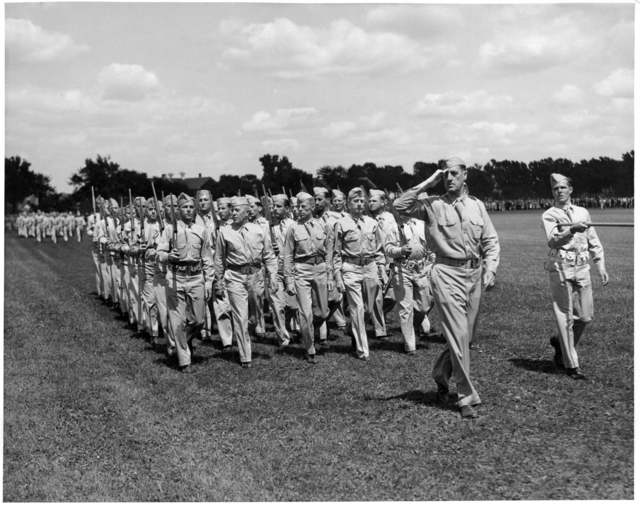


Military Experience
In summer 1942, Van Hyfte was drafted into the military. He was first stationed at Camp Wolters, Texas, and was a part of 60th Infantry Training Battalion, Company D. While there, he applied for a Defense Savings Bond. After training, he was sent to Fort Leavenworth, Kansas, where he applied for National Service Life Insurance on September 5, 1942.
In 1943, he was stationed in San Diego, California, where he was assigned to the 8th Infantry Division, 121st Infantry Regiment, 2nd Battalion, Company E. At some point during his military career. He met his girlfriend, Bobbie. In August 1943, Van Hyfte purchased life insurance for $2,000 payable to his family in case of his death. His family recounted that he was given leave and spent Christmas 1943 with his family before heading overseas.
Overseas, the 8th Infantry Division trained in Northern Ireland before embarking for France. They departed Belfast on June 30 and arrived in France on July 4, 1944. The division then headed further inland to Montebourg and La Haye-du-Puits, where they met resistance on July 8. American forces fought a deadly battle for the bombed-out city. The unit rested from June 15 to 25 before rejoining the fight on July 26. Early that morning, the division attacked a German stronghold in a church in Saint-Patrice-de-Claids. The 121st Infantry Regiment faced heavy opposition and was hit with heavy mixed artillery and mortar fire from the enemy around noon. Van Hyfte most likely died in this encounter.
Back in Minnesota, on July 27, 1944, family members noted that their goat became sick. Then, on August 9, when they received the telegram informing them of their son’s death, the goat died. They also noted that the family dog was “up all night howling and barking.”
On August 17, 1944, an American Legion Gold Star Citation was issued to the family. The Van Hyfte family received two letters of condolence from the 121st Infantry Regiment. One was sent in December 1944, while the other was later sent in 1945 to reply to letters sent from the family.
The Van Hyfte family contacted a French woman in the Normandy area named Louise Michel. She placed flowers on his grave, and the family would send her money in return. Like many French citizens after the D-Day invasion, she did it in appreciation of the American soldiers and what they did for her country in World War II. As she did not speak any English, Michel’s telegrams had to be translated for the family when they arrived.
Burial Information
The family received letters in 1946, 1947, and 1949 from the Office of the Quartermaster General. The first letter informed the family that Henry’s resting place was the Blosville Cemetery. In 1947, the second letter requested that the family reply to whether they would like their son’s remains to stay in France or be returned home. After deciding to leave his remains in France, the family was notified in 1949 concerning his final interment at the Normandy American Cemetery in Colleville-sur-Mer, France.
In 1949, the family replied with an article from the newspaper, asking if they could have a picture of their son’s grave sent to them. A letter was later received saying that the message would be “forwarded to the proper agency.” It is not known whether the family received the requested photograph.
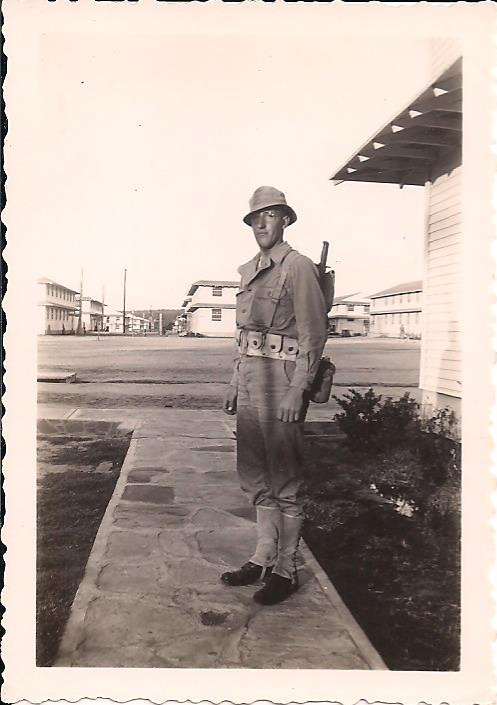


Eulogy
Corporal Henry Bernard Van Hyfte. One name out of the thousands of soldiers buried here at the Normandy American Cemetery in Normandy, France. Each soldier buried here or listed on the tablets of the missing has a unique story. This is his.
Henry, also known as Hank, was born to Renil and Elizabeth Van Hyfte. The family lived on a farm outside of Taunton, Minnesota. He and his brothers went to school at a schoolhouse a few miles away from their farm. The rest of the time, the children spent working on the farm, going to house parties, playing cards, or doing whatever they could to keep themselves entertained.
From the day Hank was born, life was normal and remained that way. Their family would farm and live life as they did. Then Pearl Harbor came, U.S. entered World War II, and began drafting young men. In 1942, Van Hyfte was drafted into the military.
He trained in the military in various divisions before finally settling into the 121st Infantry Regiment of the 8th Infantry Division. He was sent off to England like many men were for more training. In July, his division arrived in France. In late July, they moved toward Perriers, France, where they launched an offensive. Hank Van Hyfte was killed in this offensive.
His family contacted a French woman in France who took care of his grave and sent back pictures. The family decided to let him stay in France because they did not want to bring the wrong body home.
The Van Hyfte family appreciates and understands his sacrifice. They know it was for a greater cause. He died for his country and the liberation of many peoples. His family understands that and continues to remember him as who he was and who he could have been.
Each soldier buried at the Normandy Cemetery died for their country. They might not have died all as heroes, but they did die for a greater cause: the liberation of peoples occupied by Hitler’s forces. They should be remembered for their courage and their sacrifice, but they should also be remembered as who they were, ordinary people living their lives when the war came and interrupted all of that.
Hank should be remembered for the ultimate sacrifice he gave to his country and should be remembered as who he was before the war; a farmer and a happy-go-lucky and fun guy. Hank, I promise to remember you as you were and as you should have been.
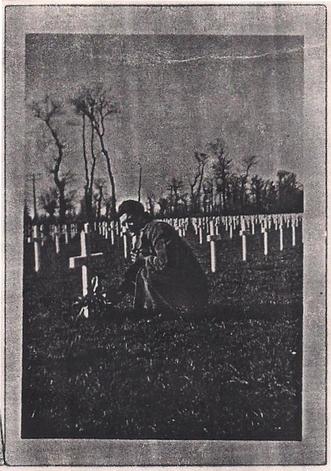

Reflection
Researching about Henry Van Hyfte’s life has been something I will never forget. I learned so much about him. I learned a lot about what he was like as a person from people who knew him and from the stories others had heard. I wish I could have met him.
When I reached his headstone in Normandy, I understood that I would never get to meet this happy-go-lucky farmer boy. I will never get to meet him, just like his family never got to see him again. His grandparents, parents, and brothers never got to see him again. His nieces and nephews never got a chance to meet their uncle about whom they had heard so many stories.
So many others died in World War II. Their loss hurt so many families and friends. May the stories of those who paid the ultimate sacrifice continue to be told so that so much pain, loss, and misery never has to happen again.
Bibliography
Primary Sources
121st Infantry Regiment Combat Journal. National Archives and Records Administration, College Park, MD.
Bonus application registers. Gale Family Library, Minnesota History Center.
Born, Carol, Barbara Gisslen, Jylan Van Hyfte, and Peggy Yunker. Personal interview with author. June 2015.
Collection of Minnesota County atlases. Gale Family Library, Minnesota History Center.
Flag Day ceremonies at Fort Snelling. Photograph. 1942. Minnesota Historical Society (MH5.9 F1.7 p51). collections.mnhs.org/cms/display.php?irn=10716295.
Henry B. Van Hyfte, Individual Deceased Personnel File, Department of the Army.
Henry B. Van Hyfte. Official Military Personnel File. National Archives and Records Administration – St. Louis.
“Henry B. Van Hyfte Killed in Action in France, July 27.” Minneota Mascot. August 18, 1944.
“Henry B. Van Hyfte Reported Killed in Action in France.” Minneota Mascot, August 11, 1944.
Henry Bernard Van Hyfte. Birth Certificate Index. Minnesota Historical Society. www.mnhs.org/people/birthrecords/1920-17079.
Henry Bernard Van Hyfte. World War II Draft Cards Young Men, 1940-1947. Digital images. ancestry.com.
Janssen, Sister Helen. Personal interview with author. October 2014.
“Large Number at Van Hyfte Service.” Minneota Mascot. August 25, 1944.
Minnesota. Lincoln County. 1940 U.S. Federal Census. Digital images. ancestry.com.
Minnesota. Lyon County. 1930 U.S. Federal Census. Digital images. ancestry.com.
“Minnesota Casualties.” Minneapolis Tribune. September 24, 1944.
“Minnesota Dead.” St. Paul Pioneer Press. September 24, 1944.
Rabey, Francis. Personal interview with author. October 2014.
Van Hyfte, Dell. Personal interview with author. August 2014.
Van Hyfte Family Photographs and Documents. Courtesy of Barbara Gisslen, Ruth Van Hyfte, Mike Forgy, and Scott Thoma.
Van Hyfte, Ruth. Personal interview with author. October 2014.
Various school records. Gale Family Library, Minnesota History Center.
Volunteers Gerald Wilsnack, Marshall Sutton, and Jasper Garner. Photograph. c.1944. Minneapolis Newspaper Collection, Hennepin County Library Special Collections. www.mnopedia.org/multimedia/volunteers-gerald-wilsnack-marshall-sutton-and-jasper-garner.
Workers on the factory line at the Twin Cities Ordnance Plant. Photograph. 1940s. Minnesota Historical Society (143.E.17.2F). www.mnopedia.org/multimedia/workers-factory-line-twin-cities-ordnance-plant.
World War I Bonus File Index. Gale Family Library, Minnesota History Center.
Secondary Sources
Anderson, Phil. “Starvation Experiment of Dr. Ancel Keys, 1944-1945.” MNopedia. Updated December 1, 2015. Accessed March 27, 2021. www.mnopedia.org/event/starvation-experiment-dr-ancel-keys-1944-1945.
Anderson, Torgny. Centennial History of Lyon County Minnesota. Marshall: Henle, 1970.
“CPL Henry Bernard ‘Hank’ VanHyfte.” Find a Grave. Updated August 8, 2010. Accessed March 27, 2021. www.findagrave.com/memorial/56651003/henry-bernard-vanhyfte.
“Henry B. Van Hyfte.” American Battle Monuments Commission. Accessed March 27, 2021. www.abmc.gov/decedent-search/van-hyfte%3Dhenry.
Sorenson, Kara. “Twin Cities Ammunition Plant.” MNopedia. Updated August 14, 2020. Accessed March 27, 2021. www.mnopedia.org/place/twin-cities-army-ammunition-plant.
“The U.S. Home Front During World War II.” HISTORY®. Updated June 7, 2019. Accessed March 27, 2021. www.history.com/topics/world-war-ii/us-home-front-during-world-war-ii.
“Victory Gardens.” Wessels Living History Farm. Accessed March 27, 2021. livinghistoryfarm.org/farminginthe40s/crops_02.html.

